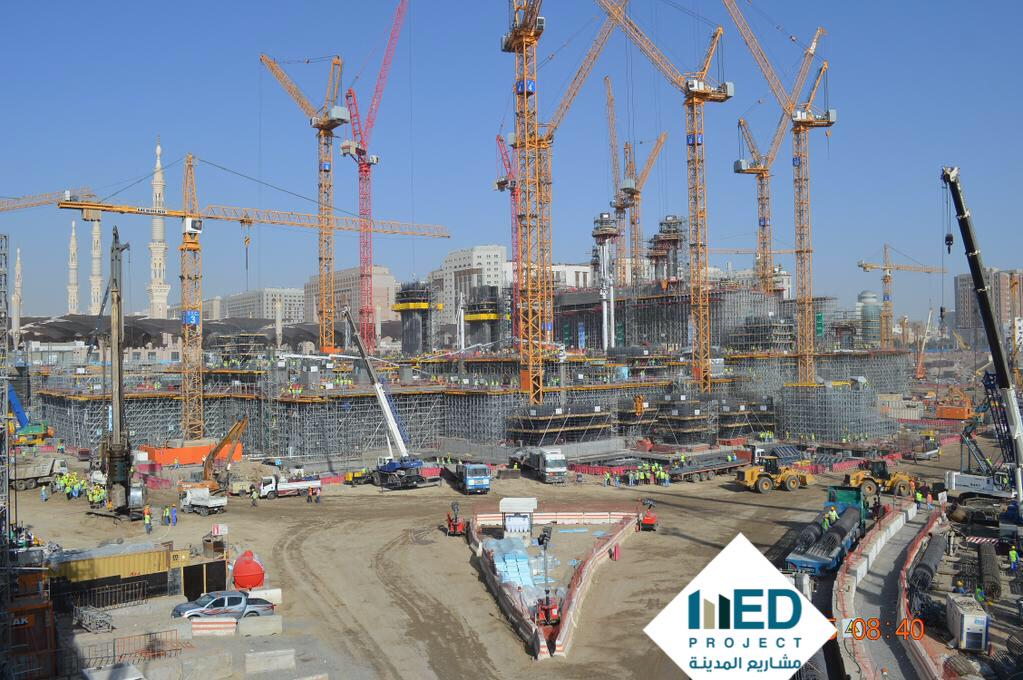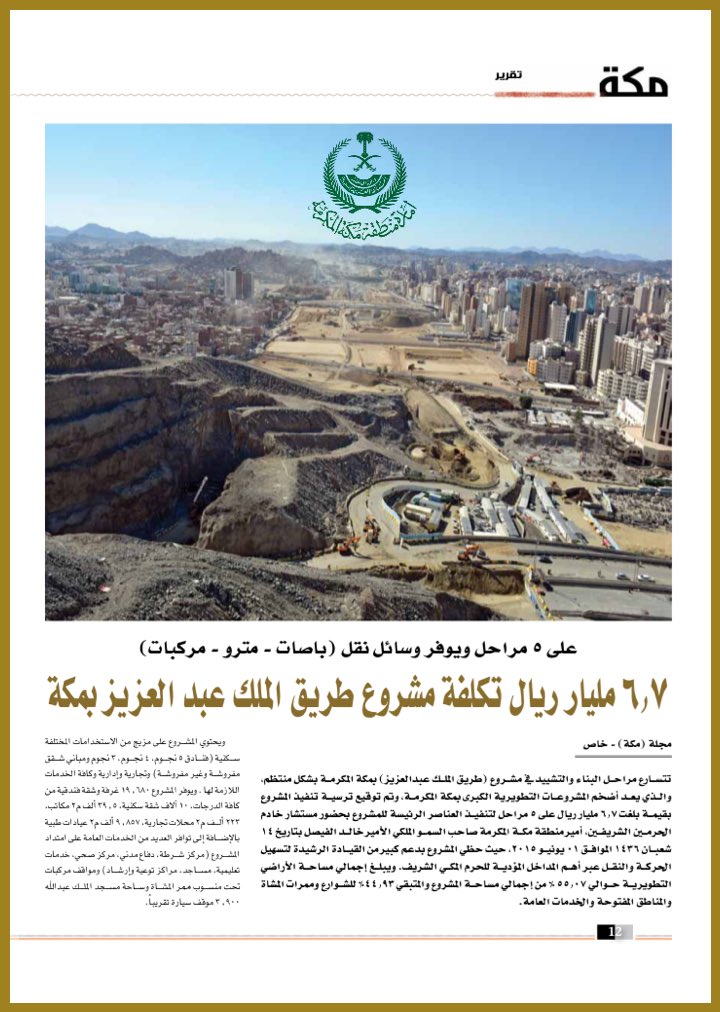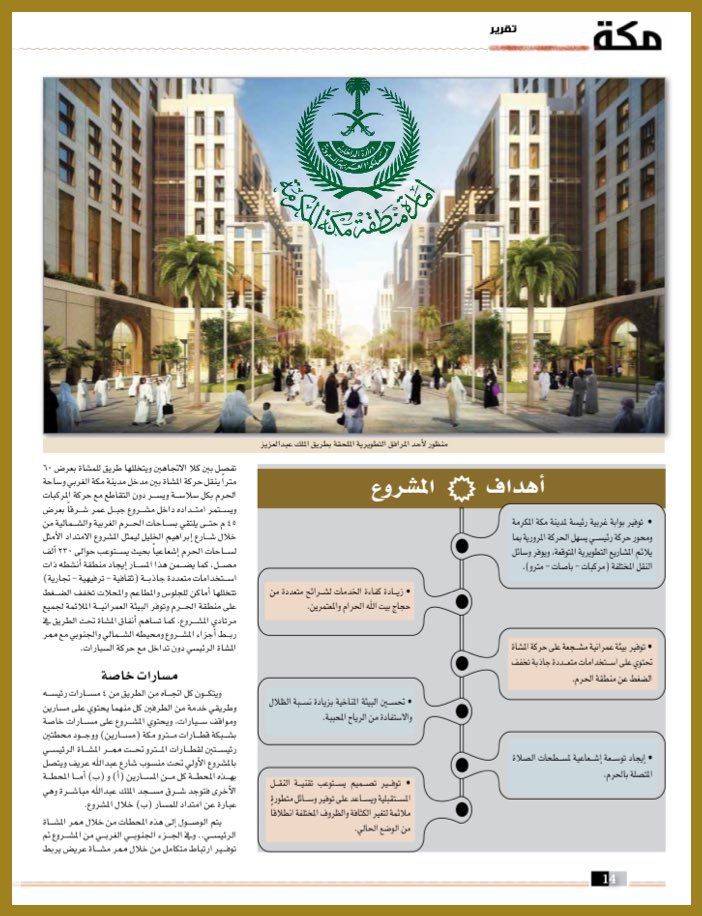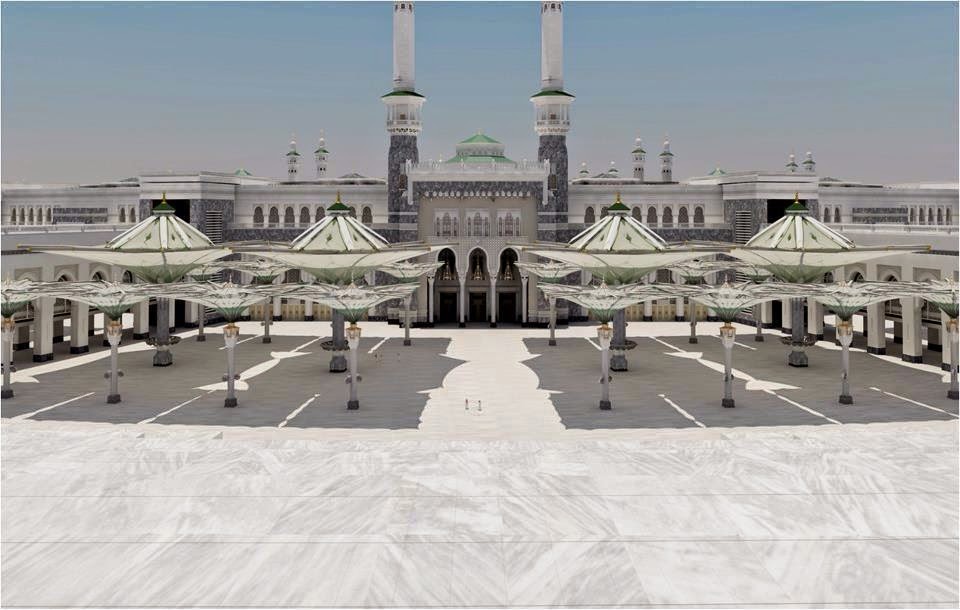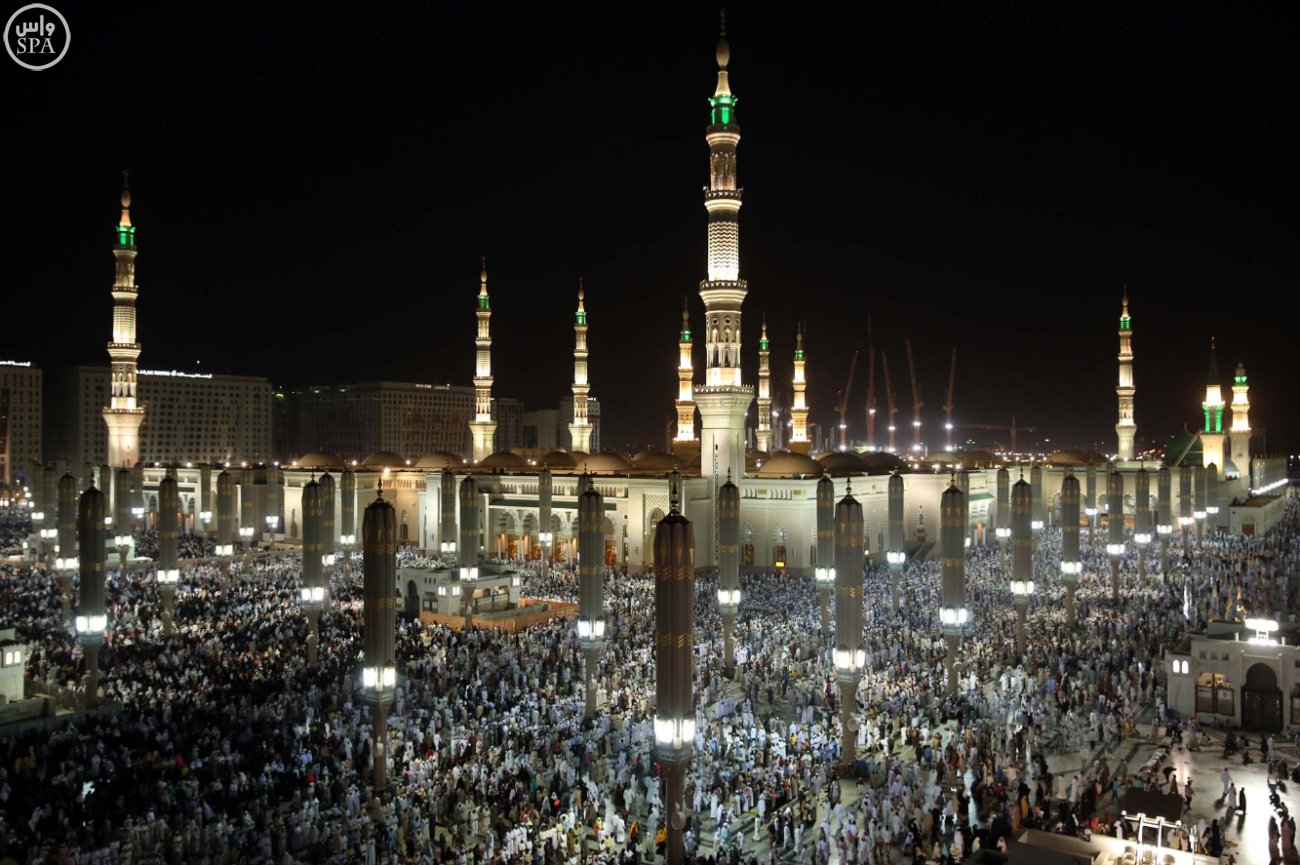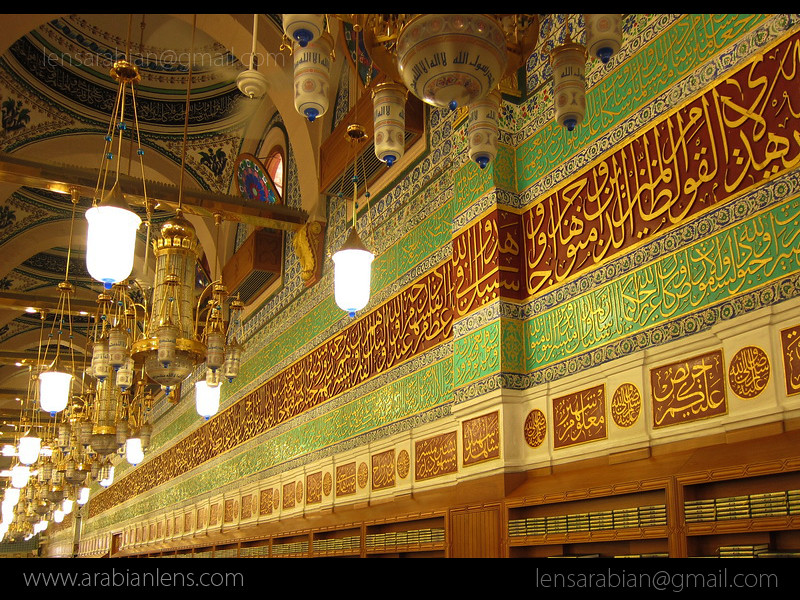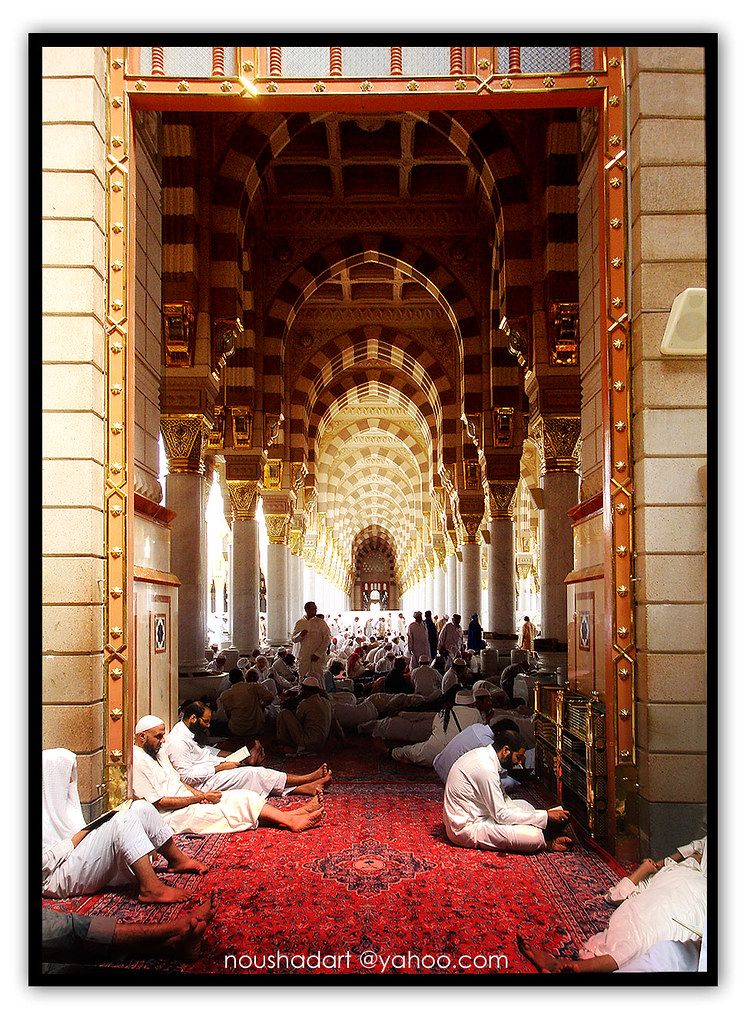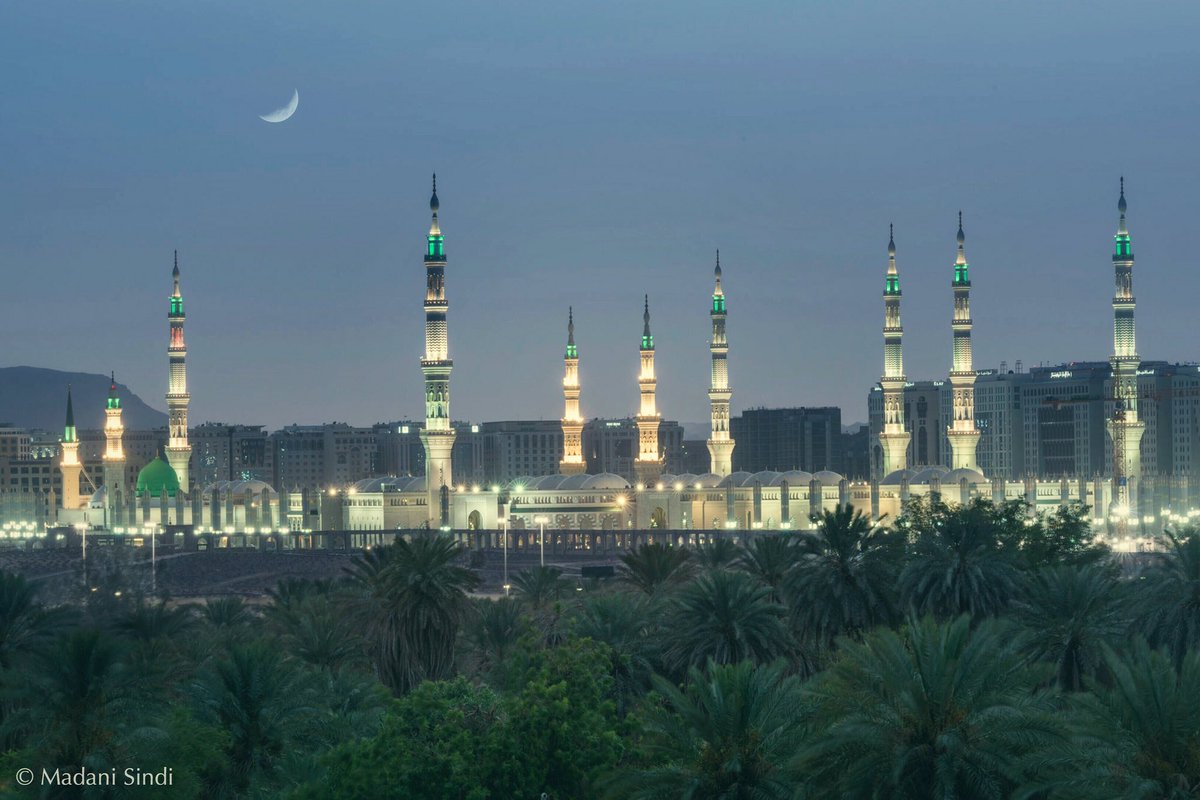SR500-billion Madinah projects on track
Custodian of the Two Holy Mosques King Salman is briefed by Madinah Gov.
Prince Faisal bin Salman of new projects in Madinah in this file picture.
Tuesday 15 September 2015
MADINAH: The massive SR500 billion expansion projects under way in Madinah are on track and becoming a reality for all to see, said Prince Faisal bin Salman, governor of the city, here recently.
Speaking at the opening of a forum and exhibition on the city’s projects, Prince Faisal said the construction includes the extension to the Prophet’s Mosque and various health services and security projects approved by Custodian of the Two Holy Mosques King Salman.
In his address, Prince Faisal said that Islam encourages the development of land to keep up with technological changes and advances. It was an essential part of all civilizations, aimed at providing the best possible services to people.
Madinah was changing so that it could meet the conditions and needs of society, and ensure that pilgrims and visitors from here and abroad can visit in safety and comfort.
Prince Faisal said the city’s administrators have formed a committee to execute and monitor all projects. The committee would make sure that all contractors respect and protect the city’s Islamic architectural heritage.
“These sites and treasures are cared for and documented by the Saudi Commission for Tourism and National Heritage (SCTNH), the specialized authority entrusted with preserving all sites connected with the life of the Prophet, peace be upon him.”
He said that the SCTNH had documented much of the heritage “related to that glorious period, to help the younger generation of Muslims maintain strong ties with their rich Islamic history.”
“The construction and development activities will, God willing, go hand in hand with identifying, recording and documenting religious, cultural and noteworthy architectural sites, as well as working diligently to protect and preserve them according to the highest world standards, which is of utmost importance.”
“We are both hopeful and keen that the basic development and construction remain as faithful as possible to the identity of the place, the design style, and the social and natural environment.”
Prince Faisal said that the development of Saudi Arabia, particularly in Makkah and Madinah, has been taking place consistently since the days of the late King Abdul Aziz, the Kingdom’s founder.
“This has now continued under King Salman, reflecting the balance between meeting the needs of the people, visitors and pilgrims, and preserving the great cultural heritage of this land.”
Earlier this year, King Salman approved the Darb Al-Sunnah Project, which is being developed under the Madinah Development Authority, according to Prince Faisal, the president of the body.
Prince Faisal had thanked the king for approving the 3-km development between the Prophet’s Mosque and Quba Mosque. In a telegram to the king, the prince said the project would upgrade the area, while protecting the original architecture of Madinah.
He said the project takes into account palm farms surrounding the mosque, which would provide visitors and residents with recreational facilities. It includes the King Abdulaziz Complex for Waqf Libraries, that enhances the city’s role as a cultural icon in the Islamic world, he said.
King Salman had earlier this year also launched the revamped Prince Mohammed bin Abdul Aziz Airport that would cater for increasing numbers of local and international visitors.
Heralding a new era of public-private partnership in the Kingdom’s aviation history, the iconic project, spread over an area of 4 million square meters, is the Kingdom’s first airport constructed and operated entirely by the private sector.
Occupying an area of 4 million square meters, the new airport would in its first phase handle 8 million passengers a year, rising to 18 million in the second phase, and then 40 million after the third and final phase.
The General Authority of Civil Aviation (GACA) has been operating the airport on a trial basis since April to check systems. It is the first airport in the Kingdom constructed and operated entirely by the private sector.
GACA raised financing by forming partnerships with Saudi and foreign companies. The project was won by a consortium consisting of Al-Rajhi Holding Group, Saudi Oger and TAV Airports Holding. The total investment for the first phase is $1.2 billion funded by the National Commercial Bank, Saudi British Bank and Arab National Bank, under the supervision of the International Finance Authority, a member of the World Bank Group.
The main travelers’ building covers 155,000 square meters and has 72 check-in counters, of which eight are for larger size baggage, 24 counters for self-check-in services, 26 passport counters for departures and the same number for arrivals. There is seating for 4,000 people.
Technologically advanced services include 36 elevators, 28 escalators and 23 conveyor belts, to facilitate and speed up the movement of passengers and luggage inside the passenger terminal complex.
In addition, the new airport features local and international shops, restaurants, and cafes, banking, and transport services including buses and taxis. Six external terminals have been built over an area of 10,000 square meters, and are close to the Haj terminal to speed up procedures.
It is the first facility in the world outside America to abide by the standards for energy use stipulated by the United States Green Building Council.
The city’s massive facelift is expected to cost around SR500 billion over the coming few years, according to economists. An estimated 2.6 million people would live in the city within the next 25 years, with 12.2 million expected to visit annually, they said.
Yousuf Al-Maimani, a member of the Shoura Council and the Investment Council of Madinah, said the city had the most diversified and attractive investment initiatives in Saudi Arabia.He said the Namaa Al-Munawara project has helped to launch the businesses of many young Saudi entrepreneurs, with loans worth over SR700 million through the Saudi Credit and Savings Bank.
Mohammad Faraj Khatrawi, chairman of the Madinah Chamber of Commerce and Industry and a member of the investment council, praised King Salman for approving the projects, which he said would ensure unprecedented development in the city.
Khatrawi said one of the Kingdom’s largest projects, the Madinah Economic City, was started in 2006, which ensured that “land was allocated and large amounts of funds were invested in constructing the infrastructure for Madinah and real estate development projects.”
SR500-billion Madinah projects on track | Arab News
The new face of Madinah
The Darb Al-Sunnah Project is set to change the landscape of Madinah
Sunday 5 July 2015
Huge projects change the faces of cities and great ambitions help create such projects. Madinah had its date with a quantum leap to usher in a new era of urban development. Such huge projects help achieve formidable civilization advancements and significant progress.
The Darb Al-Sunnah Project is one of the mega-projects which will open up a new enormous atmosphere for the development of Madinah between the Prophet’s Mosque and the Quba Mosque. This is a road which is 3 km-long. It will also have land development projects for hotels and residential towers. It will be connected with the urban heritage of Madinah. Once completed it will be the lifeline of the holy city.
During his visit, Custodian of the Two Holy Mosques King Salman inaugurated Prince Mohammed bin Abdul Aziz Airport which is considered a major architectural masterpiece. This airport will cater to visitors of the Prophet’s Mosque whether they come from within the country or abroad.
The government has enough will to make these projects a reality without keeping these ideas locked inside drawers. The supervision of King Salman and the launch of these projects by him personally has sent a strong message of how much the Saudi leadership is concerned about development in Madinah. The kind of importance Madinah Gov. Prince Faisal bin Salman is giving to these projects actually determines the fixed time frame for execution of the plan and it makes clear that he has a clear vision of the city’s development. It will also help achieve interests of the visitors to the Prophet’s Mosque.
The Darb Al-Sunnah Project is a stepping stone in the development of Madinah along with the projects of the Madinah Development Authority. The first phase includes a university, a project of green and renewable energy, Madinah Specialty Hospital and King Abdul Aziz Complex of Libraries.
Madinah is ushering in a new era. The government has made massive investments in expansion of the Prophet’s Mosque. It is clear that after the completion of these projects, opportunities for major developments will open.
This will positively reflect on the social and economic condition of the people of Madinah. Prince Faisal bin Salman has plunged into this developmental project as head of the Supreme Authority of Development of Madinah. He has successfully made integration between various ideas and visions from different sides, putting them together to achieve development for the happiness of mankind.
The new face of Madinah | Arab News













































